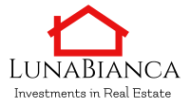How to Qualify a residential investment property
Investors do what is traditionally called BOE ( Back of the Envelope analysis). The GOAL of BOE is to quickly dismiss projects that do not make sense for our investment strategy.
An example of a quick decision is:
Property A price $200,000 rents for $1500 a month
Property B price $200,000 rents for $1700 a month
Property C price $200,000 rents for $1900 a month
If the above properties are all located in the same area and are in approximately the same condition the decision is easy. But what if property C is located in a less desirable area and needs a lot of work, in this case, property A or B might be better suited
Generally, an investor is looking for a net cash flow and/or looking for wealth building: a return of their original investment plus appreciations and as little head-hakes as possible.
Cash Out : Purchase and Operating expenses of the investment. We have to consider how much money the investment costs, how and when the money goes into the investment during its lifetime
Cash In : Yearly cash flow, plus a large cash flow at the time of sale. How much money the investment produces and at what time.
Risk : How predictable is the cash flow? Investors seek higher financial returns when they feel like they have higher risks. For example: purchasing a property with a loan increases the risk but it might be still worth it since it increases the revenue. Some areas are more risky than other so if you buy in a riskier area you will want a biggest profit
Costs To calculate the return of a rental property you have to include: purchase price, closing costs, renovation costs, maintenance costs, vacancy, real estate taxes, loan interest, and selling costs, all for several years down the line.
What is good, however, is that the portion of the loan that goes toward the principal is money that goes to you: in most cases, both depreciation and interest paid can be deducted from your income to lower your taxable income (confirm this with your accountant). Let’s see if we can put all of this together but first let’s look at this simple excel example:
| PROPERTY 1 321 25TH ST NW #801, WASHINGTON, DC 20037 | ||
| Yearly | Monthly | |
| Rental income | $19.200,00 | $ 1.600,00 |
| Condo fee | ($9.180,00) | $ 765,00 |
| Taxes | $0,00 | |
| Insurance | ($500,00) | |
| Rental cost, Vacancies | ($1.200,00) | $ 100,00 |
| Miscellaneous | ($600,00) | $ 50,00 |
| NET INCOME | $7.720,00 | |
| PURCHASE COST | $165.000,00 | |
| Renovation | $0,00 | |
| Closing costs | $4.000,00 | |
| Total Cost | $169.000,00 | |
| CAP RATE | 4,6% | |
| Property 2 123 CARRIAGE HOUSE TER #H, SILVER SPRING, MD 20904 | ||
| Yearly | Monthly | |
| Rental income | $16.800,00 | |
| Condo fee | ($3.024,00) | $ 252,00 |
| Taxes | 1,306 | |
| Insurance | ($500,00) | |
| Rental cost, Vacancies | $0,00 | $ – |
| Miscellaneous | ($600,00) | $ 50,00 |
| NET INCOME | $12.676,00 | |
| PURCHASE COST | $150.000,00 | |
| Renovation | $2.000,00 | |
| Closing costs | $3.500,00 | |
| Total Cost | $155.500,00 | |
| CAP RATE | 8,2% |
The above example examines two different types of properties. The second property brings a yield that is almost two times the first one but there could be other factors that might influence your decision like the location
Also if you need a loan to purchase a property the cost of the loan and the interests will have to be computed into the exel
Please check Examining Investment Properties
- Resources - February 29, 2024
- Funding Resourses for Real Estate - February 28, 2024
- Off Market Maryland properties - February 28, 2024

